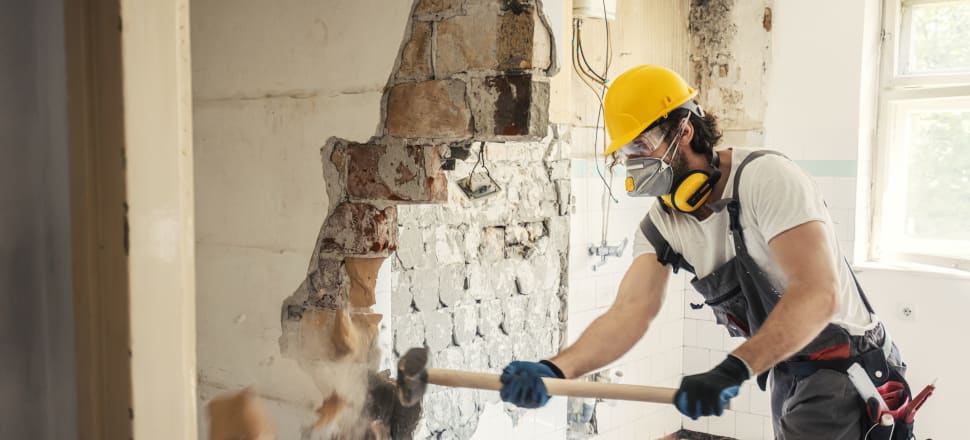
Researchers say New Zealand needs to beef up its workplace health and safety system, to better monitor the long-term consequences of exposure to cancer-causing agents throughout the course of people's careers
Auckland-based plasterer Darrin McLay is pretty blunt when it comes to the risks of working with potentially harmful dust every day.
"Some time in the next 20-odd years it will probably kill me, and I expect that. This is my 41st year of plastering, so I've been doing it a long time. It's a hazard of the job unfortunately," he tells The Detail.
The dust, he says, is unavoidable.
"We have machines, like dust-free sanders attached to vacuum cleaners, but every day we still cop plenty of dust. It's right through the van. If you put your finger over the speedometer, it would come out quite dusty and when you clean it out it's just a mess of dust."
And he's not the only one. The first New Zealand Carcinogens Survey, commissioned by WorkSafe, found more than half of workers in the sample were exposed to at least one cancer-causing agent.
Dr Amanda Eng, an occupational health expert, and Professor John Potter, an epidemiologist, are part of a group of researchers from Massey University who've taken a close look at the results of the survey.
"Almost one in three workers are exposed [to carcinogens] at a high level, which is a level above what is considered safe, and almost one in four are exposed to five or more carcinogens," Eng says.
The industry with the highest level of exposure is mining, with 97.5 percent of workers exposed to at least one carcinogen. Workers in the agriculture and construction sectors are also among the most at risk.
Potter says sunlight is the most common carcinogen (sun exposure, of course, causes melanoma), but the organic solvent benzene is also of concern.
"It's widely used in New Zealand in the collision repair industry, but it's also associated with a variety of exposures – people fuelling vehicles, people fuelling machinery, people using solvents to clean machinery ... and we know that this particular one, benzene, is associated with leukemia."
There's been increasing coverage as well of the dangers posed by crystalline silica, which is a key component in engineered stone.
"It's associated with not only lung cancer, but it's also associated with fibrosis in the lung that we call silicosis," Potter says.
We know the risks, so what action can we take?
Eng is one of a number of researchers working with high-risk industries to minimise exposure to carcinogens. The work includes looking at farmers' pesticide exposure, crystalline silica exposure in construction workers and solvent exposure in panelbeaters.
She's leading the crystalline silica study, and what they've found so far is that demolition and concrete workers are exposed to high levels of it, but attaching vacuums to particular tools can help reduce the amount of dust and other particles workers are inhaling.
Eng and Potter say one of the weaknesses of New Zealand's system is there is no occupational health service catered to individual workers. Potter says WorkSafe, the country's workplace health and safety regulator, doesn't do anything like that.
"They are responsible for some aspects of the way in which occupational health and safety is regulated, but they don't provide a service to individual workers," he says.
"One of the things that I think is really crucial here, is that we set up a system to monitor long term some of these heavily-exposed workers in industries that we know are at risk."
WorkSafe says the carcinogen survey results will help it better understand the risks in different industries – and target education and enforcement action.
It'll be using the data from this survey as a baseline, so when they repeat it in five years' time, they'll know whether workers' exposure to cancer-causing agents has reduced.
It's working with a number of other agencies on work-related cancer issues like accelerated silicosis, and asbestos-related diseases.
Hear more about this issue in the full podcast episode.
Check out how to listen to and follow The Detail here.
You can also stay up-to-date by liking us on Facebook or following us on Twitter.








